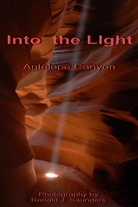
Antelope Canyon Photography by Ronald J. Saunders
All images and text are Copyright protected
copyright © 2008 Ronald J. Saunders
They say that light is everything in photography, and those that control the light are masters. Photography in Antelope Canyon, Arizona is certainly about light but here is a chance to work with the additional elements of texture, color and form. Nature has taken care of all the elements for you, allowing you to concentrate on composition and technical requirements of the image.
All images and text are Copyright protected
copyright © 2008 Ronald J. Saunders
They say that light is everything in photography, and those that control the light are masters. Photography in Antelope Canyon, Arizona is certainly about light but here is a chance to work with the additional elements of texture, color and form. Nature has taken care of all the elements for you, allowing you to concentrate on composition and technical requirements of the image.
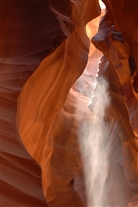
Antelope Canyon Photography by Ronald J. Saunders
All images and text are Copyright protected
copyright © 2008 Ronald J. Saunders
Light
The light in the canyon is constantly changing because of weather condition and the seasonal position of the sun. Antelope Canyon is well known for the shafts of light that enter the canyon in the form of beams of various size, shape and intensity. To get the beams in your photography you will need to be in the canyon during May or June, during specific hours of the day for the best results. I will talk more about that later. If the beams are not there, the canyon still provides the light, color, and shape for exceptional photography.
All images and text are Copyright protected
copyright © 2008 Ronald J. Saunders
Light
The light in the canyon is constantly changing because of weather condition and the seasonal position of the sun. Antelope Canyon is well known for the shafts of light that enter the canyon in the form of beams of various size, shape and intensity. To get the beams in your photography you will need to be in the canyon during May or June, during specific hours of the day for the best results. I will talk more about that later. If the beams are not there, the canyon still provides the light, color, and shape for exceptional photography.
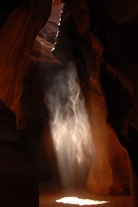
Antelope Canyon Photography by Ronald J. Saunders
All images and text are Copyright protected
copyright © 2008 Ronald J. Saunders
Technical (somewhat)
Simply put, this is a low light situation where some thought will help you achieve remarkable results. First of all, a tripod is mandatory and firing your camera remotely is useful but not manatory. Exposure times will be in the order of sub-second to as long as several minutes, so consider a good sturdy tripod. The canyon floor is sand and provides quick tripod placement and movement. Getting the light beam in focus is not going to be your main concern. In most cases you are going to need to pay attention to depth of field which can only be achieve by a small aperture which in turn leads to long exposure times. I recommend an aperture priority mode setting
For most of my images, I used an aperture of f/13 or f/18. I don’t think that you should be any wider for acceptable depth of field. Even smaller apertures are very desirable but the canyon can be quite crowded with tourists and the exposure times that I experienced were in the range of one-half second to 20 seconds. The best images will be obtained at f/22 or smaller if conditions tolerate the longer exposure time which can be several minutes. There is a pretty high risk that someone is going to ghost through your image during a several minute long exposure. Using your aperture priority mode is a good way to set your depth of field requirement to f/13 or narrower. Remember, any aperture smaller than this is going to help significantly with the image quality.
All images and text are Copyright protected
copyright © 2008 Ronald J. Saunders
Technical (somewhat)
Simply put, this is a low light situation where some thought will help you achieve remarkable results. First of all, a tripod is mandatory and firing your camera remotely is useful but not manatory. Exposure times will be in the order of sub-second to as long as several minutes, so consider a good sturdy tripod. The canyon floor is sand and provides quick tripod placement and movement. Getting the light beam in focus is not going to be your main concern. In most cases you are going to need to pay attention to depth of field which can only be achieve by a small aperture which in turn leads to long exposure times. I recommend an aperture priority mode setting
For most of my images, I used an aperture of f/13 or f/18. I don’t think that you should be any wider for acceptable depth of field. Even smaller apertures are very desirable but the canyon can be quite crowded with tourists and the exposure times that I experienced were in the range of one-half second to 20 seconds. The best images will be obtained at f/22 or smaller if conditions tolerate the longer exposure time which can be several minutes. There is a pretty high risk that someone is going to ghost through your image during a several minute long exposure. Using your aperture priority mode is a good way to set your depth of field requirement to f/13 or narrower. Remember, any aperture smaller than this is going to help significantly with the image quality.
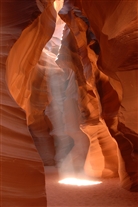
Antelope Canyon Photography by Ronald J. Saunders
All images and text are Copyright protected
copyright © 2008 Ronald J. Saunders
Set your ISO to 100 or 200. Although there are times that using very high values is beneficial, I don’t think this is one of those time. Higher ISO values lead to higher noise and the preferred way is the longer integration time provided by a shutter that stays open for a long time. Turning the ISO up is simply changing the gain which does boost signal but also increases the noise. It also does not collect more photons which is the information that provides the image. It is preferable to gather more light with a longer exposure time than to simply turn up the gain of the amplifiers in the camera.
To close out the technical discussion, let’s outline the lens choice. A wide angle zoom from about 18 to 35 mm will be a good choice. It does not matter about the longest focal length as most of you photography will be at the low end. If you have a fish-eye then take it with you to get some really interesting shots. You will not want this as your primary lens, however.
All images and text are Copyright protected
copyright © 2008 Ronald J. Saunders
Set your ISO to 100 or 200. Although there are times that using very high values is beneficial, I don’t think this is one of those time. Higher ISO values lead to higher noise and the preferred way is the longer integration time provided by a shutter that stays open for a long time. Turning the ISO up is simply changing the gain which does boost signal but also increases the noise. It also does not collect more photons which is the information that provides the image. It is preferable to gather more light with a longer exposure time than to simply turn up the gain of the amplifiers in the camera.
To close out the technical discussion, let’s outline the lens choice. A wide angle zoom from about 18 to 35 mm will be a good choice. It does not matter about the longest focal length as most of you photography will be at the low end. If you have a fish-eye then take it with you to get some really interesting shots. You will not want this as your primary lens, however.
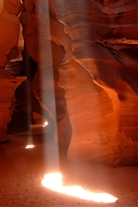
Antelope Canyon Photography by Ronald J. Saunders
All images and text are Copyright protected
copyright © 2008 Ronald J. Saunders
Environment
Antelope Canyon is a desert location in Arizona just a few miles outside of the city of Page. It is a great location that is close to many of the other tourist attractions associated with the Grand Canyon and Bryce Canyon just to name a couple. There is lots of dust and sand and lots of sun. Carry water with you at all times and make sure you check weather conditions which can range from cold to hot depending on the time of year. Your equipment will get dusty and there is a lot of sand, so consider this. There is no way to prevent the problem but make sure you have lens wipes handy to wipe down the lens. When the light is entering the canyon, the tour guide will literally through a great amount of sand into the air so that the light will reflect off the grains and the beam will form. Although this can happen naturally, you would not want to wait.
All images and text are Copyright protected
copyright © 2008 Ronald J. Saunders
Environment
Antelope Canyon is a desert location in Arizona just a few miles outside of the city of Page. It is a great location that is close to many of the other tourist attractions associated with the Grand Canyon and Bryce Canyon just to name a couple. There is lots of dust and sand and lots of sun. Carry water with you at all times and make sure you check weather conditions which can range from cold to hot depending on the time of year. Your equipment will get dusty and there is a lot of sand, so consider this. There is no way to prevent the problem but make sure you have lens wipes handy to wipe down the lens. When the light is entering the canyon, the tour guide will literally through a great amount of sand into the air so that the light will reflect off the grains and the beam will form. Although this can happen naturally, you would not want to wait.
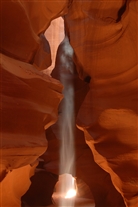
Antelope Canyon Photography by Ronald J. Saunders
All images and text are Copyright protected
copyright © 2008 Ronald J. Saunders
The People
I can’t say enough about the great Navajo people I met on this trip. Everyone was very hard working and cordial. They put in very long hours and really appreciated the chance to work with me. I arranged for Chief Tsosie to do a private portrait session with me at night within the canyon. At that point he had not been to sleep in 48 hours. I had also arranged a private evening tour with a guide, Milo, who took me to his home country 30 miles south of Page, high up on the plateau overlooking Bitter Springs. He called this his backyard. It was nice to get a chance to learn a little bit about the Navajo. Just keep in mind, this is not the Wild West and that they do all this to make a living for fees and tips are appreciated by all. It is always a good policy to let them know that you appreciate their work and then reward them appropriately.
All images and text are Copyright protected
copyright © 2008 Ronald J. Saunders
The People
I can’t say enough about the great Navajo people I met on this trip. Everyone was very hard working and cordial. They put in very long hours and really appreciated the chance to work with me. I arranged for Chief Tsosie to do a private portrait session with me at night within the canyon. At that point he had not been to sleep in 48 hours. I had also arranged a private evening tour with a guide, Milo, who took me to his home country 30 miles south of Page, high up on the plateau overlooking Bitter Springs. He called this his backyard. It was nice to get a chance to learn a little bit about the Navajo. Just keep in mind, this is not the Wild West and that they do all this to make a living for fees and tips are appreciated by all. It is always a good policy to let them know that you appreciate their work and then reward them appropriately.
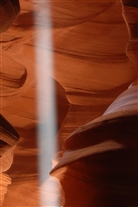
Antelope Canyon Photography by Ronald J. Saunders
All images and text are Copyright protected
copyright © 2008 Ronald J. Saunders
Tours
Antelope Canyon is only accessible through tours provided by licensed guides. There are lots of tours available, but if you are interested in photography then you should identify a tour for that purpose. The guides for the photography tours are experienced with the best places, angles and light conditions. A good deal of their effort goes into crowd control and making sure those other tours don’t spoil your shots. On my tour the guides were concerned with each person on the tour and insured that we each got our shots at every stop. There are so many people in the canyon just waiting to walk through your photography! The guides will be of immense help with this problem.
I took two tours back-to-back in order to experience a range of lighting condition. Make sure you check with the tour company regarding when the beams will appear. I can highly recommend the tour company that provided me with the service.
Antelope Slot Canyon Tours - http://www.antelopeslotcanyon.com/
All images and text are Copyright protected
copyright © 2008 Ronald J. Saunders
Tours
Antelope Canyon is only accessible through tours provided by licensed guides. There are lots of tours available, but if you are interested in photography then you should identify a tour for that purpose. The guides for the photography tours are experienced with the best places, angles and light conditions. A good deal of their effort goes into crowd control and making sure those other tours don’t spoil your shots. On my tour the guides were concerned with each person on the tour and insured that we each got our shots at every stop. There are so many people in the canyon just waiting to walk through your photography! The guides will be of immense help with this problem.
I took two tours back-to-back in order to experience a range of lighting condition. Make sure you check with the tour company regarding when the beams will appear. I can highly recommend the tour company that provided me with the service.
Antelope Slot Canyon Tours - http://www.antelopeslotcanyon.com/
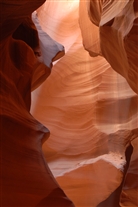
Antelope Canyon Photography by Ronald J. Saunders
All images and text are Copyright protected
copyright © 2008 Ronald J. Saunders
A final word
You will not regret this magical experience of light, color and texture. After your tours, there are a lot of things to see in the immediate area. Don’t forget to visit Horseshoe Bend for a breathtaking panorama of the Colorado River.
All images and text are Copyright protected
copyright © 2008 Ronald J. Saunders
A final word
You will not regret this magical experience of light, color and texture. After your tours, there are a lot of things to see in the immediate area. Don’t forget to visit Horseshoe Bend for a breathtaking panorama of the Colorado River.
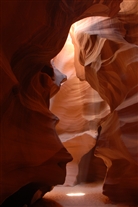
Antelope Canyon Photography by Ronald J. Saunders
All images and text are Copyright protected
copyright © 2008 Ronald J. Saunders
Credits, copyright and other information
Sound Track - Native Canyon by Kat Epple, Commercial licensed through ProductionTrax.com.
Tour Host – Antelope Slot Canyon Tours, Owner Chief Ray Tsosie. 55 S. Lake Powell Blvd.
Page, AZ 86040, 1-928-645-5594
Tour Guides – Milo Begay and Vere Chee.
Models –Models may not be shown in this presentation . Chief Ray Tsosie, Milo Begay, Vere, Chee.
Photography – All images were taken by Ronald J. Saunders
Copyright - copyright © 2008 Ronald J. Saunders
All images and text are Copyright protected
copyright © 2008 Ronald J. Saunders
Credits, copyright and other information
Sound Track - Native Canyon by Kat Epple, Commercial licensed through ProductionTrax.com.
Tour Host – Antelope Slot Canyon Tours, Owner Chief Ray Tsosie. 55 S. Lake Powell Blvd.
Page, AZ 86040, 1-928-645-5594
Tour Guides – Milo Begay and Vere Chee.
Models –Models may not be shown in this presentation . Chief Ray Tsosie, Milo Begay, Vere, Chee.
Photography – All images were taken by Ronald J. Saunders
Copyright - copyright © 2008 Ronald J. Saunders
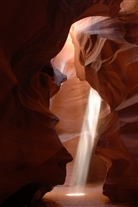
Antelope Canyon Photography by Ronald J. Saunders
All images and text are Copyright protected
copyright © 2008 Ronald J. Saunders
All images and text are Copyright protected
copyright © 2008 Ronald J. Saunders
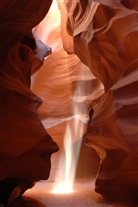
Antelope Canyon Photography by Ronald J. Saunders
All images and text are Copyright protected
copyright © 2008 Ronald J. Saunders
All images and text are Copyright protected
copyright © 2008 Ronald J. Saunders
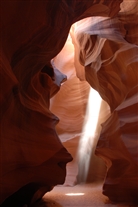
Antelope Canyon Photography by Ronald J. Saunders
All images and text are Copyright protected
copyright © 2008 Ronald J. Saunders
All images and text are Copyright protected
copyright © 2008 Ronald J. Saunders
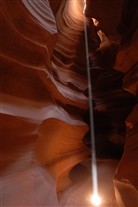
Antelope Canyon Photography by Ronald J. Saunders
All images and text are Copyright protected
copyright © 2008 Ronald J. Saunders
All images and text are Copyright protected
copyright © 2008 Ronald J. Saunders
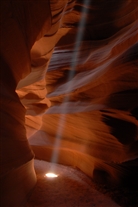
Antelope Canyon Photography by Ronald J. Saunders
All images and text are Copyright protected
copyright © 2008 Ronald J. Saunders
All images and text are Copyright protected
copyright © 2008 Ronald J. Saunders
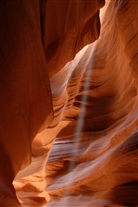
Antelope Canyon Photography by Ronald J. Saunders
All images and text are Copyright protected
copyright © 2008 Ronald J. Saunders
All images and text are Copyright protected
copyright © 2008 Ronald J. Saunders
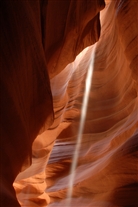
Antelope Canyon Photography by Ronald J. Saunders
All images and text are Copyright protected
copyright © 2008 Ronald J. Saunders
All images and text are Copyright protected
copyright © 2008 Ronald J. Saunders
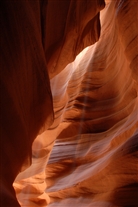
Antelope Canyon Photography by Ronald J. Saunders
All images and text are Copyright protected
copyright © 2008 Ronald J. Saunders
All images and text are Copyright protected
copyright © 2008 Ronald J. Saunders
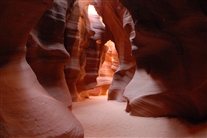
Antelope Canyon Photography by Ronald J. Saunders
All images and text are Copyright protected
copyright © 2008 Ronald J. Saunders
All images and text are Copyright protected
copyright © 2008 Ronald J. Saunders
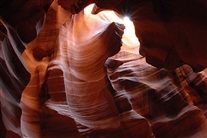
Antelope Canyon Photography by Ronald J. Saunders
All images and text are Copyright protected
copyright © 2008 Ronald J. Saunders
All images and text are Copyright protected
copyright © 2008 Ronald J. Saunders
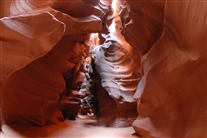
Antelope Canyon Photography by Ronald J. Saunders
All images and text are Copyright protected
copyright © 2008 Ronald J. Saunders
All images and text are Copyright protected
copyright © 2008 Ronald J. Saunders
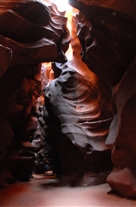
Antelope Canyon Photography by Ronald J. Saunders
All images and text are Copyright protected
copyright © 2008 Ronald J. Saunders
All images and text are Copyright protected
copyright © 2008 Ronald J. Saunders
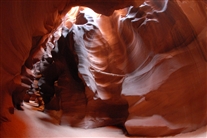
Antelope Canyon Photography by Ronald J. Saunders
All images and text are Copyright protected
copyright © 2008 Ronald J. Saunders
All images and text are Copyright protected
copyright © 2008 Ronald J. Saunders
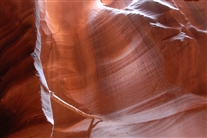
Antelope Canyon Photography by Ronald J. Saunders
All images and text are Copyright protected
copyright © 2008 Ronald J. Saunders
All images and text are Copyright protected
copyright © 2008 Ronald J. Saunders
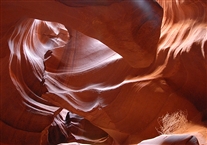
Antelope Canyon Photography by Ronald J. Saunders
All images and text are Copyright protected
copyright © 2008 Ronald J. Saunders
All images and text are Copyright protected
copyright © 2008 Ronald J. Saunders
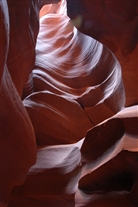
Antelope Canyon Photography by Ronald J. Saunders
All images and text are Copyright protected
copyright © 2008 Ronald J. Saunders
All images and text are Copyright protected
copyright © 2008 Ronald J. Saunders
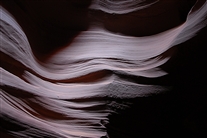
Antelope Canyon Photography by Ronald J. Saunders
All images and text are Copyright protected
copyright © 2008 Ronald J. Saunders
All images and text are Copyright protected
copyright © 2008 Ronald J. Saunders
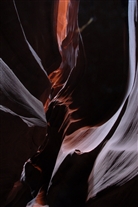
Antelope Canyon Photography by Ronald J. Saunders
All images and text are Copyright protected
copyright © 2008 Ronald J. Saunders
All images and text are Copyright protected
copyright © 2008 Ronald J. Saunders